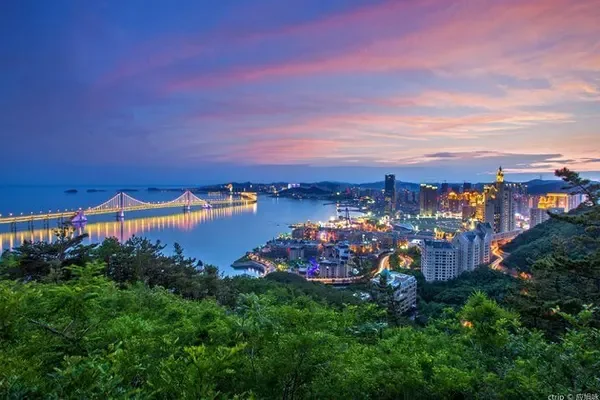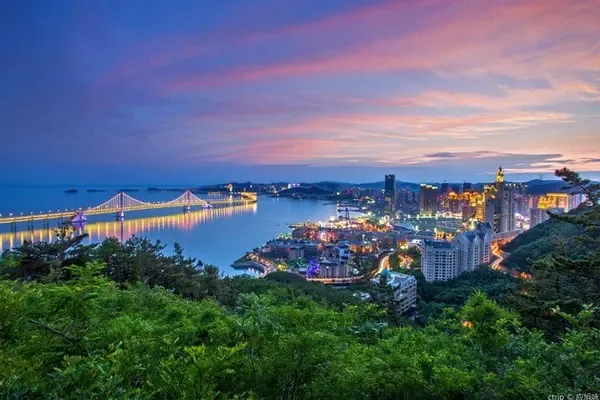"What I pursue is happiness. I perform in Zhenbeipu West Cinema!" -- Zhang Xianliang.
Zhenbeibao Western Film City, located in Yinchuan City, Ningxia Hui Autonomous Region, is a national AAAAA-level tourist attraction integrating sightseeing, entertainment, leisure, catering and shopping. Founded by writer Zhang Xianliang on September 21, 1993
Take the through train in the morning to visit Zhenbeibao
When traveling in Ningxia, I recommend the direct train to Ningxia tourist attractions. The staff all wear yellow vests, and the minions are hospitable and hospitable. There are two tourist distribution centers in the new city railway station and Crescent Square in the old city, where you can stay nearby Convenient, there are many hotels, and the transportation is convenient. It is not far from the civil aviation bus, and it is very convenient whether it is by train or plane. The one-way fare for the direct train from the scenic spot to the Xixia Royal Tomb, Zhenbeibao Film and Television City, Helan Mountain rock paintings, Shuidonggou, and Shahu Lake is 15 yuan per person, and the tickets are more affordable and convenient.
Zhenbeibao Film and Television City is divided into three parts: Old Yinchuan Street in Qingcheng, a famous city. If you play hard, you can go play for a day.
Zhang Xianliang was born in Nanjing, Jiangsu Province in 1936. He is a typical second-generation official and rich man. His father was an official of the Kuomintang, and he later gave up his official position to go into business. When the family was rich, he had two cars, two drivers, six cooks, an English housekeeper and a private tutor. After liberation, his father was imprisoned as an old bureaucrat, and Zhang Xianliang also fell out of this family, but this did not affect his love for literature and art.
From 1954 to 1958, more than 100,000 people were transferred from the mainland to the Yinchuan area. They were all unemployed and unemployed, and all of them were urban residents of the so-called "poor family composition". In 1955, Zhang Xianliang immigrated to Helan County, Yinchuan as a villager. Not long after arriving in Yinchuan, Zhang Xianliang, who had received a high school education, was transferred to the Yinchuan Cadre Culture School. During the Anti-Rightist Movement in 1957, Zhang Xianliang was wrongly classified as a "rightist" because of his publication of "Song of the Great Wind". Once, by accident, he "found" the desolate Zhenbei Fort, which left a deep impression on him.
Zhenbei Fort is located in Xixia District, Yinchuan City, 35 kilometers away from the center of Yinchuan. The original site was the frontier fortress of Ming and Qing Dynasties. The Ming government built the Great Wall in the northwest, and built a pass in the narrow area between the Yellow River and Helan Mountain to resist the invasion of Mongolian cavalry. There are more than 20 border guards like Zhenbeibao in Ningxia.
"Fortress", as the name suggests, refers to a castle. In addition to the garrison, there are a small number of military families and farmers. According to records, Zhenbei Fort was built in the Hongzhi period of the Ming Dynasty (1500). Mingbao is roughly square, about 200 x 200 meters, and the loess is pounded layer by layer with straw and glutinous rice soup, but there are not many urban bricks.
In the third year of Qianlong in the Qing Dynasty (1738), the city wall of Mingbao (Old Fort) in Ningxia almost collapsed and was damaged due to an earthquake. In the fifth year of Qianlong's reign, the Qing government built a new castle 200 meters northeast of Mingbao, named "Qingcheng". This castle is also like a square, shaped like Mingbao. In 58, the steelworks were requisitioned. There are 22 herdsmen in the two fortresses, and the new fortress is the shepherd's sheepfold.
Zhenbeibao Western Studios Qingcheng
Qingcheng is dominated by hustle and bustle, and the antique markets, shops and various folk arts and crafts have disappeared and will soon disappear. There is also a "Great Beauty for Good" exhibition hall, which exhibits Zhang Xianliang's collection.
After the Third Plenary Session of the Eleventh Central Committee in 1979, Zhang Xianliang's reputation was restored and 22 years of reform through labor ended. He also wrote novels, essays, reviews, and scripts, and became a famous writer at home and abroad in the independent literary world with works such as "Soul and Flesh" and "Half a Man Is a Woman".
Zhang Xianliang, a famous writer, chairman of the Federation of Literary and Art Circles, and chairman of the Ningxia Writers Association, these titles gave Zhang Xianliang an opportunity to recommend to the film and television industry two ruins without water, electricity, and roads, only dilapidated cave dwellings and dilapidated sheep. lock up.
Selling barrenness, Zhenbeibao Film City has become a "unique China" different from other film and television cities in China.
The main scene in the famous film "Red Sorghum". "Jiuer's Room" is the "home" of the famous movie star Gong Li in the film "Red Sorghum". Because of his role as "Jiuer" in the film, it is also called "Jiuer's Room". The scene of Zhang Yimou speaking for Gong Li is preserved in the courtyard. "Red Sorghum" is adapted from Mo Yan's novel of the same name, directed by Zhang Yimou, starring Jiang Wen and Gong Li, released in 1987, and won the Golden Bear Award at the 38th Berlin International Film Festival in 1988. After Red Sorghum, Zhenbei Fort is lucky! The picture below (information) is director Zhang Yimou speaking to Gong Li.
Changbanpo Street is an important shooting scene built by Zhenbeibao Western Studios for the crew when the famous director Liu Zhenwei filmed the final version of "A Chinese Journey to the West" "Yueguang Treasure Box". The filming location of soaking in urine and repelling enemy soldiers is also a typical Han Dynasty residential community. The Moon Gate is the most classic and beautiful shot in the Chinese film and television industry. Designed by Yang Gang, a famous Chinese artist, it is the main scene of the famous movie "Red Sorghum". Although it is a doorway built with adobe on the dilapidated ancient city wall, it has a tall, tragic beauty, and its simple shape has achieved inestimable artistic value. Therefore, many later films, such as "Su Dongpo" and "A Chinese Journey to the West" ", "Book and Sword Enmity Record", "The Valley of Broken Enmity", "Dragon Ticket", "Jedi Canglang", "Journey to the West" and so on are all filmed here.
More than 200 film and television scenes have been preserved in the Western Studios, and various simulation props have been created, allowing tourists to travel through the film and experience the fun of film and television drama shooting.


